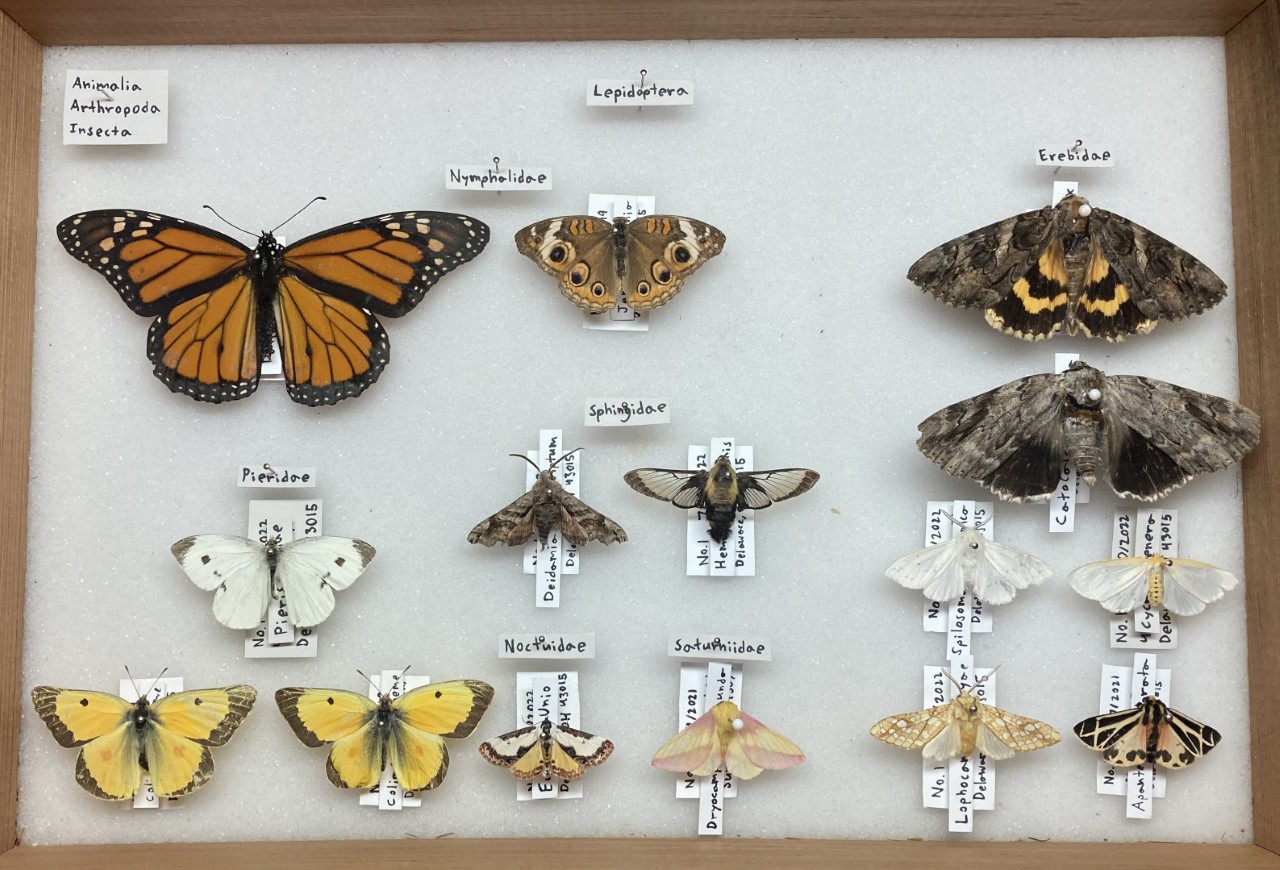By Adam Willis, Seasonal Naturalist
My first real interest in biology started with insects. There was something about that class of life—this subset of phylum Arthropoda containing over 1 million described species—that I find utterly captivating. Although I appreciate insects for a number of reasons—their importance as a food source, their significant role as pollinators, their fascinating life cycle—nothing has struck me more than their boundless biodiversity.
If you remember the organization of taxa, you will recall that orders fall under classes. Class Insecta contains 29 distinct orders, with 8 being the most common. These common orders are Coleoptera (beetles), Lepidoptera (butterflies and moths), Hymenoptera (bees, wasps, and ants), Diptera (flies), Hemiptera (true bugs), Orthoptera (grasshoppers and katydids), Mantodea (mantises), and Odonata (dragonflies and damselflies). These orders are further divided into families, then genera, then species. Can you imagine all that biodiversity?
 Since 2019, I have consistently kept a small collection of insects, which serves as my survey of Delaware County. Although I am not a professional entomologist, the catching, preserving, and cataloging of these insects has provided me with both a hands-on approach to learning taxonomy and an extremely rewarding hobby. I’ve organized my collection into two boxes: one is strictly for Lepidoptera, while the second is for orders Hemiptera, Diptera, Mantodea, and Odonata. Each insect is carefully pinned through the right half of the thorax, arranged to appear alive, and labeled with two tags—one stating the full scientific name, the other stating when and where it was found. As of 2022, I have collected 22 species of insects, half of which are in order Lepidoptera.
Since 2019, I have consistently kept a small collection of insects, which serves as my survey of Delaware County. Although I am not a professional entomologist, the catching, preserving, and cataloging of these insects has provided me with both a hands-on approach to learning taxonomy and an extremely rewarding hobby. I’ve organized my collection into two boxes: one is strictly for Lepidoptera, while the second is for orders Hemiptera, Diptera, Mantodea, and Odonata. Each insect is carefully pinned through the right half of the thorax, arranged to appear alive, and labeled with two tags—one stating the full scientific name, the other stating when and where it was found. As of 2022, I have collected 22 species of insects, half of which are in order Lepidoptera.
 This research is more for my personal education than proper scientific study; however, I have observed a few interesting things over the past three years that indicate trends in different populations. For example, the monarch butterfly I have in my collection was collected in mid-October. Although this is only one sample, it being in Ohio at this time supports the current trend seen in monarch migration patterns: colder springs and warmer autumns lead to later migrations. Another trend I observed is the stability of native mantis populations; both of my Carolina mantis samples were found in my backyard, indicating healthy populations in urban areas.
This research is more for my personal education than proper scientific study; however, I have observed a few interesting things over the past three years that indicate trends in different populations. For example, the monarch butterfly I have in my collection was collected in mid-October. Although this is only one sample, it being in Ohio at this time supports the current trend seen in monarch migration patterns: colder springs and warmer autumns lead to later migrations. Another trend I observed is the stability of native mantis populations; both of my Carolina mantis samples were found in my backyard, indicating healthy populations in urban areas.
I don’t market my collection as some kind of profound scientific discovery. In fact, the species I’ve collected aren’t even a single grain of sand in the desert which is the class Insecta. However, what I can say is that with enough energy and dedication, any small hobby can blossom into a boundless passion. One day, when I’m finished collecting in Delaware County, I’ll donate my collection to a local university that will use it for future research. And one day, when I complete my education, I might find myself again engrossed in the wildflowers or behind the eyepiece of a microscope, donating even more of myself to the study of this fascinating class of life.






